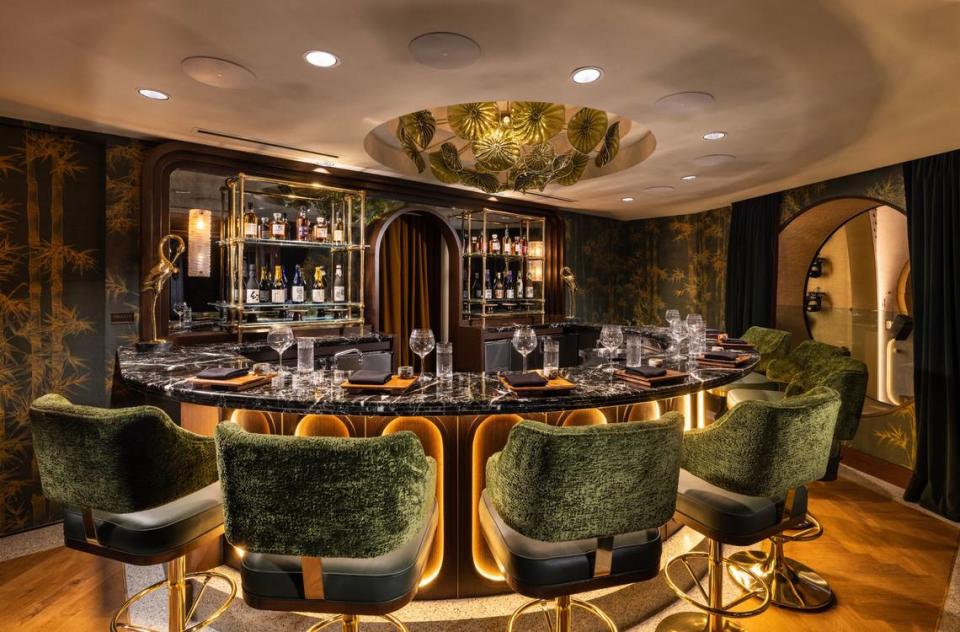Miami is obsessed with luxury omakase dining. Here’s everything you need to know
When you walk into one of Miami’s Japanese omakase restaurants, uncertain yet curious, the space you enter will be as reverent as a church — or as riotous as a nightclub.
You will enter through a hidden doorway or behind a taco stand or right off the street. Maybe you’ll just walk up to a counter at a local food hall. Maybe you need a password. Maybe you only need a reservation.
The chefs will be busy, formal and silent or busy, joking and friendly. The room will be lit by a neon glow like an old-time speakeasy or bright and beautifully designed. Maybe the space is merely a counter. Dignified attire will be required, or shorts and a Miami Heat T shirt will suit just fine.
Where can you eat omakase-style in Miami? Try these restaurants
And if you love fresh seafood and possess the soul, palate and courage of an adventurer, the food you’ll eat — whether you find it in Brickell or Wynwood, South Beach or Coconut Grove, Calle Ocho or Coral Gables — will be among some of the best you’ve ever tried.
The truth is there is no telling exactly what your experience will be like, because dining omakase-style in Miami is never the same (although it is rarely an inexpensive proposition). The experience of indulging in a “chef’s choice” menu — essentially a tasting menu — is different at every establishment.
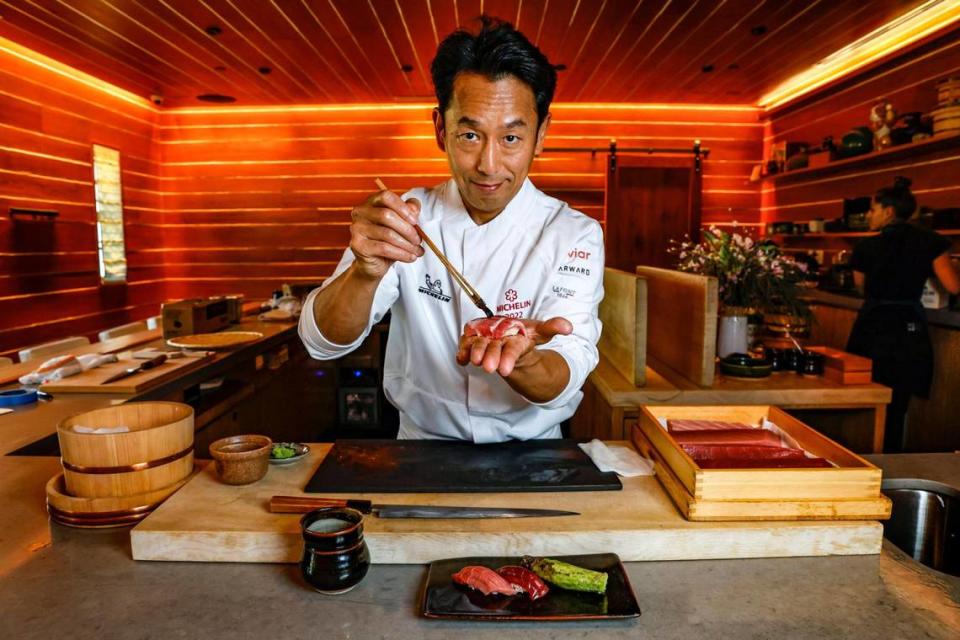
The popularity of omakase in Miami has skyrocketed in the past few years, particularly since 2020, when the most recent onslaught of out-of-town restaurants began.
Sebastian Labno, the chef at Nossa Omakase on Miami Beach, opened his restaurant in 2020 and says that the omakase landscape has changed dramatically since then.
“When we opened, we had The Den at Azabu and Naoe,” he says. “Hiden was just opening. Now I can throw a rock and hit five omakases.”
The OG of Miami omakase, the tiny, traditional Naoe on Brickell Key, the only Forbes Five-Star restaurant in the county, opened its doors 14 years ago as the city’s first omakase-only dining experience.
But many other spots — among them Nossa, Sushi Bar on Miami Beach and Sushi by Scratch in Coconut Grove — arrived during or since the pandemic. The brand Sushi By Bou, which had closed its space in the former Versace mansion on South Beach, reopened last year at the SLS Brickell. The extravagant new Japanese restaurant Queen in South Beach’s historic Paris Theater just announced the opening of a new omakase speakeasy. There’s even an omakase experience at MIA Market food hall in the Design District, led by the former chef at The Den at Azabu in Miami Beach, one of two omakase spots that earned Michelin stars in 2022 (the other is Hiden in Wynwood).
Established restaurants like Mila on South Beach have also introduced omakase experiences recently, and there are still new restaurants on the way, such as Shingo from Michelin-starred Chef Shingo Akuni, formerly executive chef at Hiden. It’s scheduled to open at the La Palma Building in Coral Gables sometime in May.
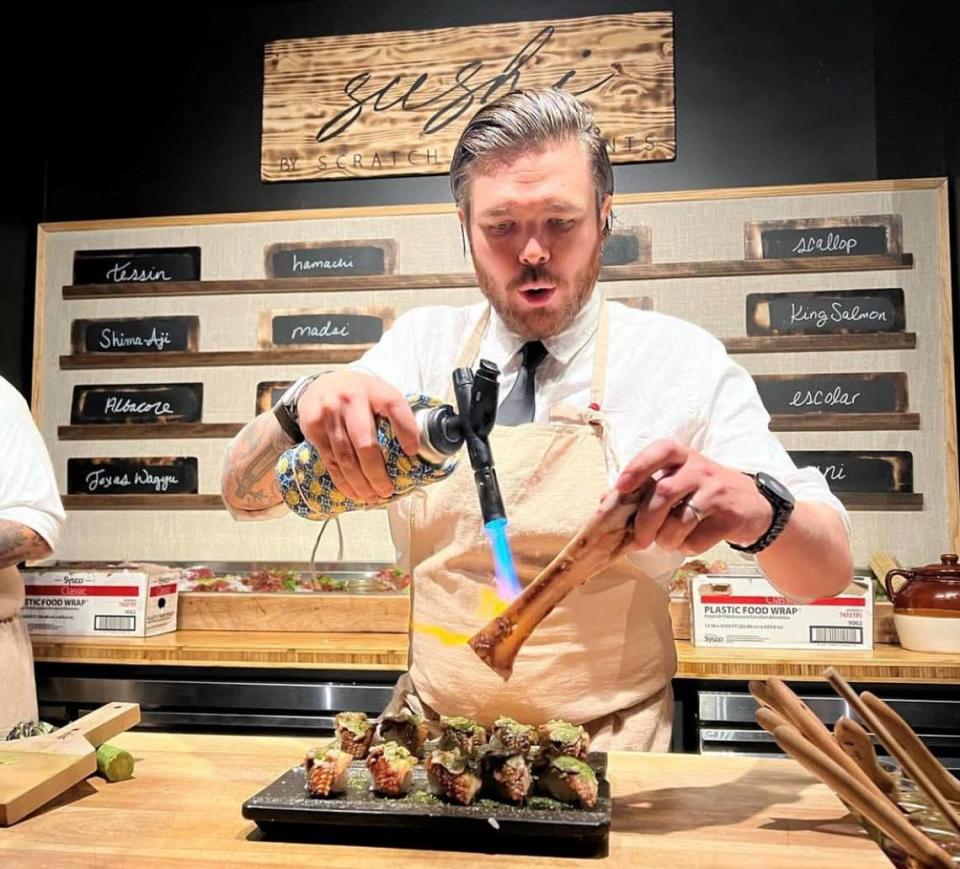
Chef Philip Frankland Lee brought his Sushi By Scratch brand from California in 2022 as part of the trend (his Montecito location earned a Michelin star).
“There’s been a huge boom of speakeasy-style sushi restaurants,” he agrees. “It’s the new trend. I’ve seen it growing across the country.”
To immerse yourself in omakase, you don’t need to know nigiri from sashimi or that there is more than one cut of tuna or that wasabi does not originate in paste form (it’s a root the chef grates, sometimes on a sharkskin grater). You just need to keep an open mind and revel in the thrill of discovery.
“You put yourself in the hands of the chef,” says Chef Ambrely Ouimette of Sushi Bar, a growing brand that originated in Austin, Texas and is now open at the Esmé hotel. “Just trust. This is their life’s passion. They’re taking you through a story. Just listen.”
Here are some Qs and As you might have about your omakase journey.
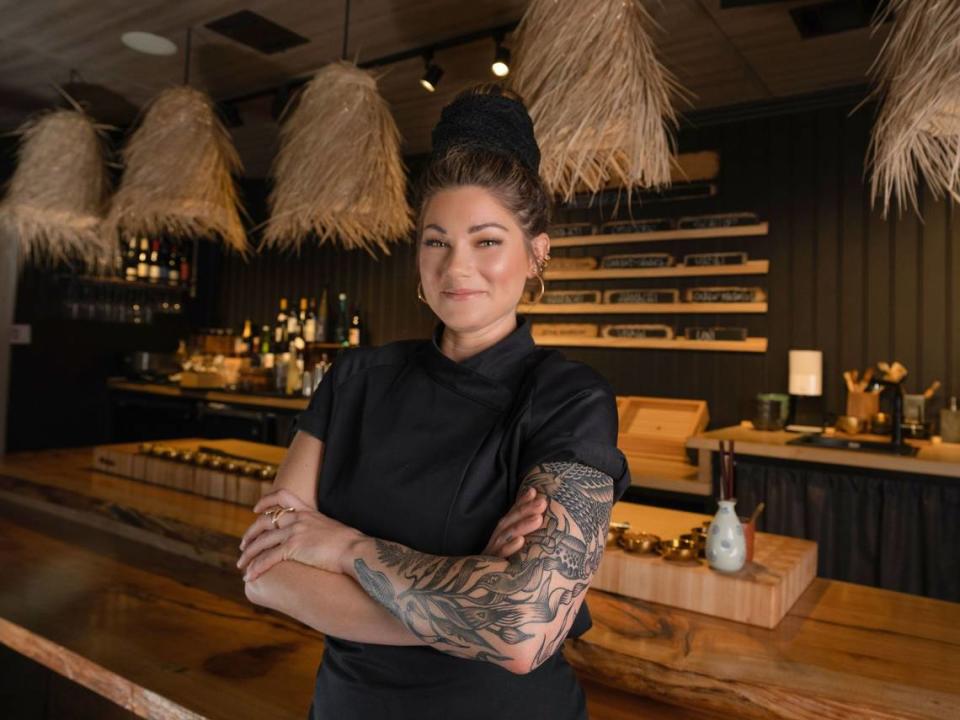
What is omakase?
Dining omakase-style means the chef sets the menu, and you eat whatever is served. Some restaurants will ask you ahead of time about allergies and make minor adjustments for issues, but others won’t. This is not a style of dining for the finicky. The entire point is to put your faith in the chef, come what may.
How much does it cost, and why does it cost so much?
Most omakase experiences will run between $180 and $375 per person, and that price does not include tax, gratuity or drinks.
But there are less expensive, no-frills options. Ahi Sushi Bar on Calle Ocho in Little Havana, an unassuming storefront with five seats, charges $130 for a low-key experience, and you can save money by bringing your own drinks (be aware there’s a $20 corkage fee, even if the chef is just twisting off the top of your wine bottle). Also less oppressive financially are Sushi Yasu Tanaka by Masumura at MIA Market in the Design District, from Chef Yasu Tanaka, formerly of The Den, and Mr. OmaKase in downtown Miami, which offers bargains at $79-$139 per person, depending on how many pieces you order.
The cost is tied to the usual things restaurant prices are tied to — rent, product quality, market value of the fish, especially when it’s shipped daily from Japan. But you’re also paying for expertise. Sushi chefs can spend a lifetime just learning to make rice. Michelin-starred Chef Atsushi Okawara at the Den has spent more than 20 years perfecting his incredible tamago, a small, custardy egg omelette that serves as dessert, while Chef Kevin Cory of Naoe admits his quest to make perfect rice, the unsung hero of high-end sushi, is ongoing (though his is pretty perfect, if you ask us).
How many courses are served?
This also varies from restaurant to restaurant. Some spots stick with 16-18 courses. Many courses are a single piece of nigiri, which is a ball of rice topped with fish or another item (basically what you think of as sushi). Other chefs go harder. Cory at Naoe serves an unforgettable Bento box of delights (on a recent excursion, we enjoyed courses of stone crab, tiny homestead tomatoes and ghostly baby squid, among other delectable items).
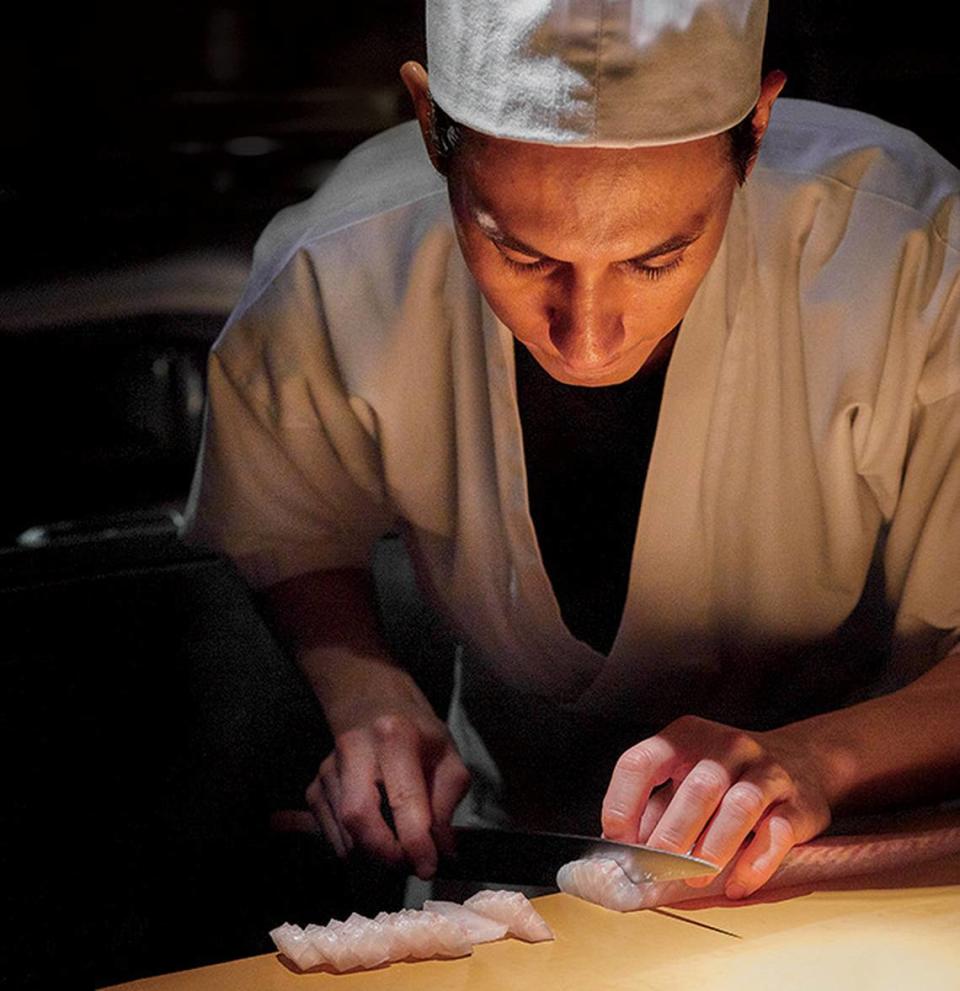
How do the chefs decide on their menus?
Menus change according to what fresh fish is available and the chef’s whims and desires. Many chefs, like Cory of Naoe, like to change the menu for regulars so they can try new things.
Is tradition important?
Say it with me now: That depends.
At Naoe, tradition plays a starring role, from the history of the upscale sakes served to the provenance of the soy sauce (Cory’s family in Japan has been making soy sauce since 1825). Nigiri and other dishes are served on gorgeous pottery made by Japanese artists.
But tradition is in the eye of the beholder. Lee of Sushi by Scratch, who grew up in California and whose avant garde menu earned him accusations of “blasphemy!” when he opened his first restaurant, says that though his menu and service isn’t generally considered traditional, he believes it is.
In Japan, he says, “sushi chefs told the story of themselves and their childhood. I thought it was traditional to tell my story of growing up eating grilled corn on the cob and sourdough bread. Telling my story through my food is traditional.” This explains one of the memorable, delicious nigiris at his restaurant, a buttery hamachi topped with corn pudding and sourdough breadcrumbs.
Ouimette of Sushi Bar is miles from traditional: In the old days, women were not sushi chefs, and to this day she’s one of the few female chefs in the business. Like Lee, she draws on her past for bold flavors, and eventually she grew bored by making traditional sushi. Growing up on a farm in the Hudson Valley she was drawn to fresh fruit like blackberries and plums, and her menu reflects that interest, with nigiri making use of the flavors of peach, pineapple, guava and passion fruit. With one course, she spritzes cinnamon spray into the air. Diners don’t exactly taste the cinnamon, but its scent enhances the flavor of the nigiri.
Her style is deliberately non-traditional. “I like to take a lot of risks,” she says. “I like entertaining food.”
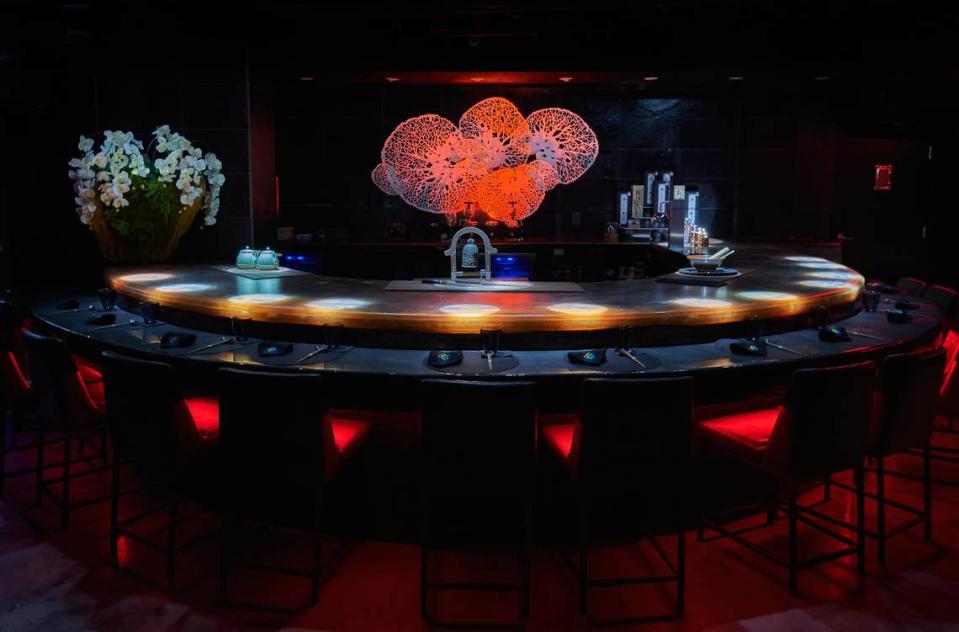
Are all omakase experiences in a speakeasy setting?
At the more upscale sushi bars, omakase meals generally take place in a small, separate room (one notable exception is Uchi in Wynwood, where you can order from the omakase menu at your table).
But sometimes, a vivid sense of the theatrical is part of the meal. At Hiden, you get an email with a secret code, then proceed to a door tucked away in The Taco Shop. At Nossa Omakase, you enter a poké restaurant on Collins Avenue, receive a password and then walk down an alley to a red door, where you knock, deliver the magic word and are whisked into a darkened bar. Then it’s onward to a dramatically designed small dining room, where Chef Labno presents your meal with insanely theatrical flourishes. Sushi as showbiz. Who knew?
Is everything on the menu fish?
No. The menus often include a Wagyu beef course. Sushi by Scratch is famous for a one-two punch to end the meal with bone marrow nigiri, then bone marrow dripped over Japanese eel (“Bone marrow has to be on all my menus,” Lee says. “I f------ love bone marrow”). You’ll also find a variety of shellfish — oysters, shrimp, Hokkaido scallop if you’re lucky — on the menu.
Is everything on the menu raw?
When you think “sushi” you might think raw, but that’s not always the case. You’ll find cured fish, torched fish, eel that has been grilled or steamed. Shrimp is usually cooked (though not always). The chef uses the treatment that brings out the best flavor.
How much do the chefs interact with you?
At this point, you will not be surprised to hear that the interaction varies from place to place. Service at The Den and Hiden, the Michelin-star winners, is more formal, without a lot of chatter. At Naoe, while Chef Cory toils, a guide takes you through the dishes and offers intriguing historical perspectives on such matters as sake and soy sauce and the gorgeous pottery service.
By contrast, at Sushi by Bou, the setting is more club than restaurant, with chefs sometimes doing shots with patrons. Chef Labno at Nossa is funny and welcoming: “The appeal is the fun factor,” he says. “I don’t want people to come to dinner and look at their phones. I like when people ask about ingredients.”
Sushi by Scratch and Sushi Bar feel like boisterous parties, where for a brief time diners and chefs become a small community, united by moans of pleasure, friendly laughter and whether or not they’re afraid to eat the uni (sea urchin). Pro tip: Never be afraid to eat the uni.
If I’m not full after my meal, can I order more?
Labno from Nossa says he tries to get a feel for whether the guests want more and stops when they’re full (and doesn’t charge for extra bites). Sushi by Scratch and Sushi Bar let you order extra creations, but you will pay for them (expect an upcharge of up to $20 a piece if they involve fois gras or truffle). At more casual spots, the rules may differ. But by now you know: when it comes to omakase, anything is possible.
